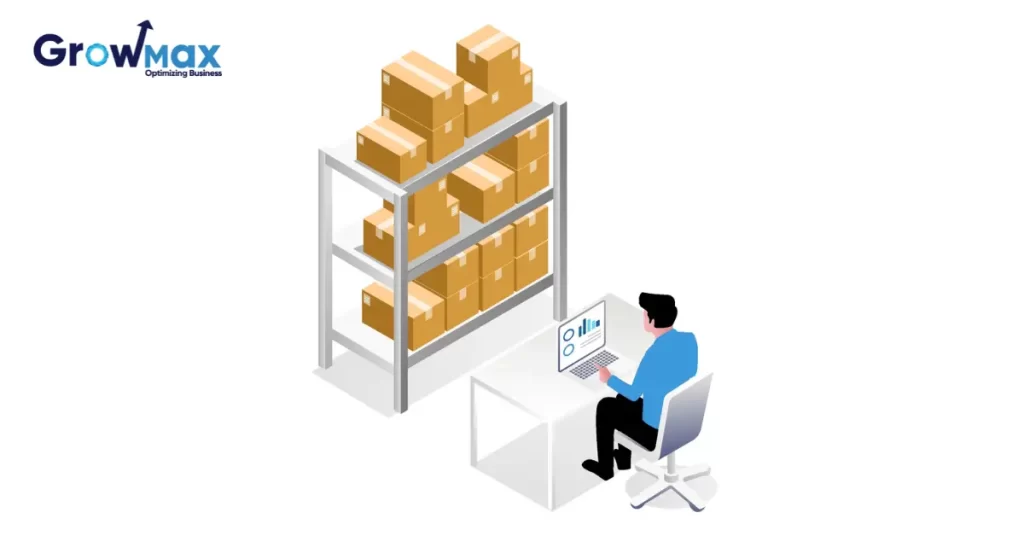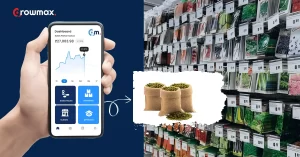Managing inventory is, hands down, one of the most critical processes in any FMCG company. After all, the only thing a customer cares about is the product he wants.
Yet, a lot of firms fail at pulling off this crucial function. And as a result, we get to see those out of stock banners across online and offline markets.
The process of inventory management and its components are very tangled. Therefore, this article intends to untangle those concepts and their related components.
It provides a complete guide on Inventory Management Software (IMS) and answers its what, why, and how.
Here we go.
Challenges Firms Need To Tackle
1)Too Much Or Too Little Production
Determining the exact production quantities is the primary challenge for firms.
Producing too much inventory can cause storage problems in a firm. And if the production doesn’t get equal market demand, it will lead to product spoilage.
On the other hand, too little inventory can fall short in fulfilling the market demand.
2)Product Spoilage
The fast-moving nature of the FMCGs makes them more vulnerable to the force of time.
The firms in the FMCG industry need to get their products to the hands of their customers as fast as they can. They get a short time window to do that because of the short lives of their products.
3)Out-Of-Stock Situations
What hurts more than losing customers? Seeing them switch to your competitors.
In most cases, it happens when the buyers cannot get the products they are looking for. Improper monitoring and management of inventory is the main cause of this.
4)Regulatory lag
Not using a proper Inventory Management System can cause lags in the distribution process. Inventories need to be monitored, managed and automated across the distribution points for best functioning.
But the question remains, what exactly is IMS?
Inventory Management Software
An Inventory Management System is a set of tools and processes that firms use to track inventory across the supply chain. It extracts data about inventory demand and availability and automates the inventory process.
Inventory management systems share a common goal:
Right products at the right place at the right time in the right quantity at the lowest possible costs.
IMS Value Propositions
1)Inventory Analytics
It provides crucial analytics about the inventory demands and their availability across the regions. These analytics help the firms to manage their production and distribution function.
2)Inventory Tracking
Inventory Management Software use barcoding and tagging to mark and handle the inventories. A firm with an established IMS can track the journey of its products using these barcodes data.
This helps a firm quickly recognize, track, and clear out the slow-moving inventories.
3)Reporting
IMS allows a firm to make detailed reports. These reports explain Inventory demands & supplies, market reach, Out-of-stocks, Overstocks etc.
4)Forecasting
A good inventory system provides accurate Inventory Forecasts. It lets the firms know about the products that will go out of stock soon.
These forecasts help firms in planning their inventory replenishment cycles.
5)Real-Time Updates
A firm can have updates about its products. But the time taken decides its value.
IMS provides real-time data to firms.
6)Automation
The need for businesses to automate their processes today is more crucial than ever. As the market and the competitors are moving fast, there’s a limit on how much humans can do.
The same rule holds for inventory management. An Inventory System allows firms to automate their production and distribution processes.
Different Departments And Their Needs For IMS
1)Manufacturing department
The manufacturing department needs to produce the products in bulk to achieve economies of scale. They need to know about the Inventory Demands in advance. It
2)In Marketing & Sales
The Marketing and Sales departments create the market demand and fulfil it respectively. They need the Inventory Analytics and Forecasts to do it well.
The sales department needs to maintain adequate inventory to fulfil customer orders.
3)In Warehousing
The warehouses have limited space, and they aren’t free. Storage for one inventory comes at the cost of the other inventories that could have been kept there.
Additionally, they need to clear out the space for future inventories. This helps maintain the smooth product flow in distribution.
Thus, warehouses need data about their inventory to accomplish these tasks. Knowing the final destination of the inventory is important to clear out the stocks and make room for more.
4)In Finance Department
The Finance department in a firm handles the availability of its liquid capital. The firm uses this liquid capital for further production and investments. Thus, they need the data about slow-moving inventories to mark them and inform the concerned authorities.
It is because of these benefits that firms go for IMS. However, not all IMS are as effective. A firm can go for two types of Inventory Management Software. The first ones are Traditional Systems, and the other ones are Cloud-based systems.
Traditional System Vs. Cloud-based System
In the past, the only way to have an Inventory Management Software for a firm was to develop one on its own. Firms needed to bear their developmental and installation costs. And integrated it manually with the different areas of the firms.
Due to these reasons, installing an IMS was not possible for SMBs and startups.
On a positive note, traditional systems gave the firms autonomy over their data. Furthermore, they allowed them to customize their system as per their requirements.
Benefits
- Customization Possibilities
- Data Privacy and Security
- Complete Integration
Problems
- Expensive
- Slow Development and Implementation
- Hardware expenses
Later, Cloud Inventory Management Software invaded the market. They solved all the problems present in the traditional systems and created some new ones.
In cloud-based systems, firms do not need to invest huge lumps in developing their systems. Instead, they can access all the benefits by paying a small subscription fee to a third-party firm that has already developed its system.
Benefits of Cloud-based systems
- Low hardware expenses
- Real-time data
- Easy to integrate
- Fast implementation
Problems with Cloud-based systems
- Data security risks
- High switching costs for firms
IMS in Omnichannel Strategy
An omni channel approach is when a company sells its items on all channels where its customers are. It provides a consistent and smooth experience to the customer across all platforms.
Additionally, It allows them to navigate multiple channels to research, order, collect, or pay for the products.
A robust Inventory Management Software is the first and most fundamental need for a firm that wishes to go omnichannel and sell everywhere.
It makes the omnichannel business possible in many ways:
Maintaining Deliveries
A company selling on just two platforms (say, brand stores and a website) cannot make delivery promises to its customers unless it first knows the location and availability of its inventories.
It needs a system to track its inventory and manage its deliveries across all the channels.
Sync Between Channels
The basic feature that differentiates an omnichannel strategy from any other strategy is the feature of synchronization.
Channels in an omnichannel strategy are interconnected and synchronized. They need to be managed together.
As a result, managing the flow of inventory in this interconnected web of sales points requires an effective Inventory Management System.
Integrated Analytics
A firm with an Omnichannel Strategy needs a system to get proper analytics about its interdependent channels. IMS bridges those gaps.
Over to You
Was this article helpful to you? Check out more articles on similar topics. Here’s an article on Distribution Management.




